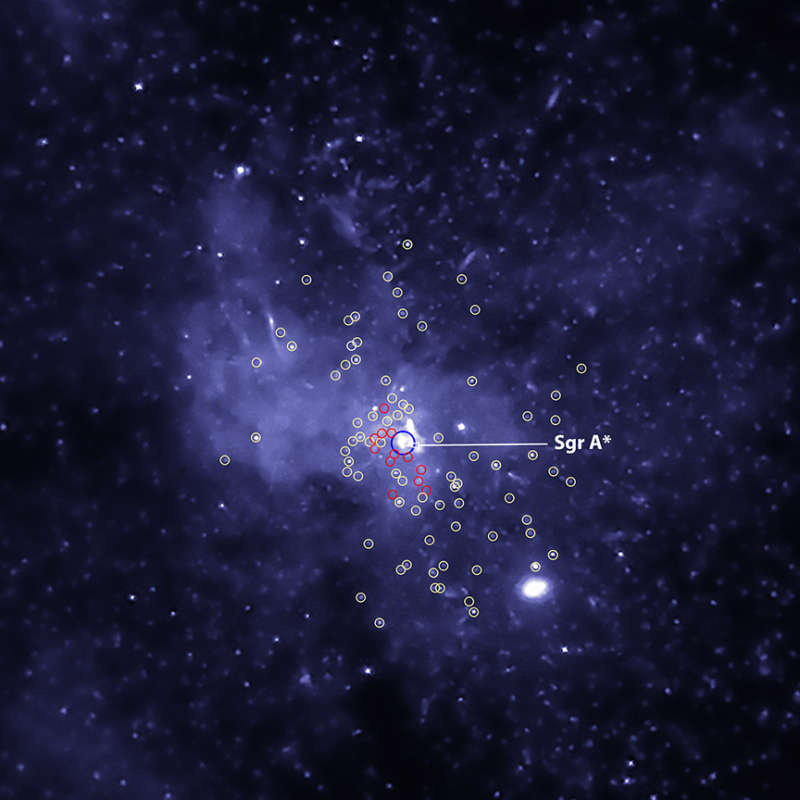
|
Credit & Copyright: NASA/CXC /
Columbia Univ./
C. Hailey et al.
Explanation:
A recent informal poll found that astronomers don't yet have a good
collective
noun for a group of black holes,
but they need one.
The red circles in this
Chandra
Observatory X-ray image
identify a group of a dozen black holes that
are members of binary star systems.
With 5 to 30 times the mass of the Sun, the black hole binaries
are swarming within about 3 light-years of
the center of our galaxy
where the supermassive black hole identified as Sagittarius A* (Sgr A*)
resides.
Yellow circles indicate
X-ray sources that are likely less massive
neutron stars or white dwarf stars in binary star systems.
Alone, black holes
would be invisible, but as part of a
binary star system they accrete material from their
normal companion star and generate X-rays.
At the distance of the galactic center
Chandra can detect only the brighter of these black hole binary systems
as point-like sources of X-rays,
hinting that many fainter X-ray emitting black hole binaries
should exist there,
as yet undetected.
|
January February March April May June July August September October November December |
| ||||||||||||||||||||||||||||||||||||||||||||||||
NASA Web Site Statements, Warnings, and Disclaimers
NASA Official: Jay Norris. Specific rights apply.
A service of: LHEA at NASA / GSFC
& Michigan Tech. U.
Based on Astronomy Picture
Of the Day
Publications with keywords: black hole - Galactic Center
Publications with words: black hole - Galactic Center
See also:
- APOD: 2025 May 9 Á IXPE Explores a Black Hole Jet
- APOD: 2025 May 6 Á The Doubly Warped World of Binary Black Holes
- APOD: 2025 May 4 Á Spin up of a Supermassive Black Hole
- APOD: 2025 April 14 Á The Galactic Center in Radio from MeerKAT
- APOD: 2024 November 24 Á Journey to the Center of the Galaxy
- APOD: 2024 October 1 Á Porphyrion: The Longest Known Black Hole Jets
- APOD: 2024 June 16 Á Animation: Black Hole Destroys Star
